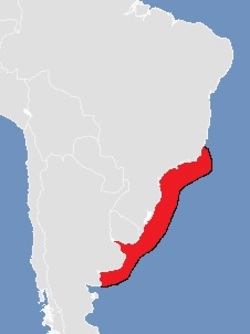
Common Name
Jenyn's Tonguefish
Year Described
Evermann and Kendall, 1906
Identification
Dorsal Fin Rays: 107-115
Anal Fin Rays: 91-99
Pectoral Fin Rays: none
Pelvic Fin Rays: 4
Caudal Fin Rays: 10, rarely 9
Longitudinal Scale Rows: 102-119
Vertebrae: 57-60
Pterygiophore pattern (1st three interneural spaces): usually 1-4-3, rarely 1-5-3 or 1-3-4
Other diagnostic characters include: large size, no pupillary operculum, no scales on the blind side dorsal/anal fin, no fleshy ridge on ocular side lower jaw, teeth only on the anterior portion of the premaxilla, no teeth on the lower jaw, membrane ostia not present, 4 hypurals, 41-51 transverse scale rows, and 21-25 post-orbital scales (Munroe, 1998).
Color
Variable shades of brown with darker pattern of crossbands (7-20) posterior to operculum. Bands can be distinct, incomplete, or reduced to vague darker mottling. Slightly darker opercular area. Peritoneum unpigmented. Fin rays are dark to black, with membranes grading from paler toward the front of the fish to dark at the rear. Tips of rays are often pale. Caudal fin is dark but there is no caudal blotch or ocelli. Blind side is whitish with yellowish areas near fin bases.
Size
The largest species of Symphurus: can reach a maximum size of >310mm, with females averaging slightly larger.
Habitat
Inner continental shelf on mud from 10-190m, with most specimens taken in the shallow end of that range (<60m). Young fish often taken in estuaries, adults more offshore.
Range Map

Range
Southeastern Brazil to central Argentina
References
Munroe, T.A. 1998. Systematics and ecology of western Atlantic tonguefishes (Symphurus: Cynoglossidae: Pleuronectiformes). Fish. Bull. 96(1):1-182.